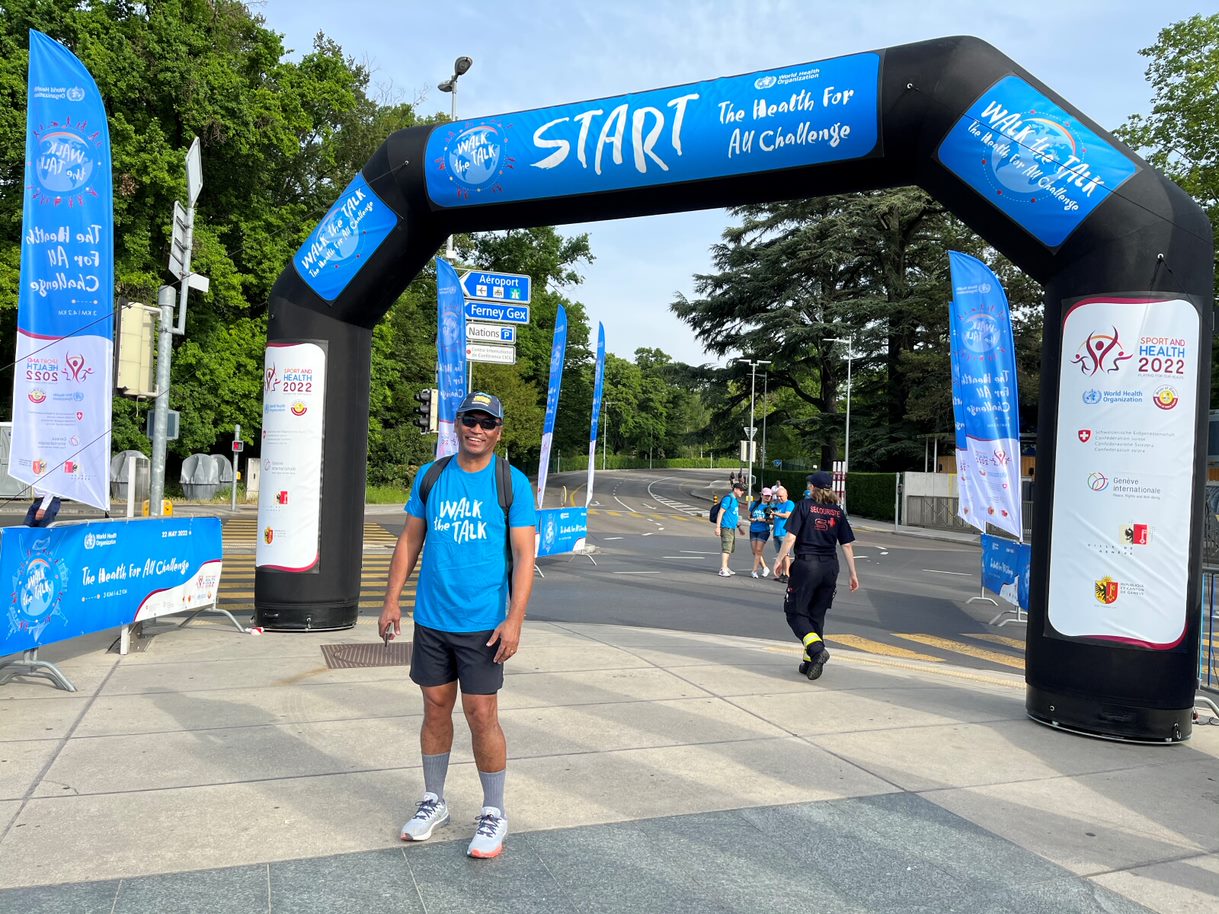
The "Walk the Talk" Program, initiated by Dr. Temo in 2016 during his tenure as the head of the Diet and Physical Activity Unit in the NCD Department of WHO, stands as a remarkable example of how branding and collective efforts can transform an organization into a hub of wellness and vitality. This case study explores the evolution of the program from its humble beginnings to a global phenomenon, drawing valuable lessons on the importance of aligning wellness initiatives with an organization's values, starting small and gradually expanding, involving top management early on, and fostering a shift from individual enthusiasm to collective engagement.
Corporate wellness programs have gained increasing importance in the modern workplace, driven by the realization that employee well-being significantly impacts productivity and morale. The "Walk the Talk" Program, conceived and championed by Dr. Temo within the World Health Organization (WHO), serves as a testament to the transformative potential of corporate wellness initiatives. This case study delves into the program's inception, growth, and the invaluable lessons it offers to organizations worldwide.
I. The Birth of "Walk the Talk" Program
The "Walk the Talk" Program was born out of a visionary idea by Dr. Temo, who recognized the need for WHO, the global agency for health development, to lead by example. In 2016, as the head of the Diet and Physical Activity Unit in the NCD Department, he took the initiative to create a healthy workplace and program. This initiative began with a simple yet impactful idea: promoting physical activity by encouraging the use of stairs over elevators and introducing team activities.
II. Starting Small and Building Momentum
Dr. Temo's approach to launching the program was astute. He started with a small team consisting of an intern and gradually assembled a dedicated group within the unit and department to drive the initiative. This strategic approach allowed the program to grow organically, gaining momentum as interest and enthusiasm spread.
III. Early Engagement of Top Management
One of the pivotal factors in the success of "Walk the Talk" was the early engagement of top management. Recognizing the potential of the program to transform WHO into a beacon of health promotion, Dr. Temo involved higher-level management sooner rather than later. Their support was instrumental in securing resources and institutional backing for the program's expansion.
IV. Shifting from Individuals to Teams and Organizations
The "Walk the Talk" Program's success hinged on its ability to shift enthusiasm from individual participants to teams and entire organizations. This shift from a singular focus on individual well-being to collective engagement ensured the program's sustainability. Teams within WHO offices worldwide began to organize their own lifestyle programs, fostering a sense of camaraderie and shared wellness goals.
V. Linking Programs to Organizational Ethos
A critical lesson gleaned from the "Walk the Talk" Program was the importance of aligning wellness initiatives with the ethos and values of the organization. By incorporating wellness as an integral part of WHO's mission, the program gained traction and credibility, resonating with both staff and external stakeholders.
VI. From Stair Climbing to Global Challenge
As the program expanded, it evolved into a 100-day Global Challenge, involving over 17,000 staff members globally. The challenge encompassed four modules: Diet, Physical Activity, Sleep, and Work-Life Balance. WHO's management recognized the potential of this initiative and invested in its development, turning it into a cornerstone of the organization's culture.
VII. Phenomenal Results
The results achieved through the "Walk the Talk" Program were nothing short of phenomenal. Individuals across the organization adopted healthier lifestyles, leading to improved well-being and reduced absenteeism. The program catalyzed team bonding in various workplaces, fostering a sense of community and mutual support. Furthermore, WHO offices around the world started staging their own lifestyle programs, showcasing the contagious nature of wellness initiatives.
VIII. Annual Walk the Talk Event
To further embed the program within WHO's culture, an annual "Walk the Talk" event was established, held prior to the World Health Assembly meetings. This event not only served as a platform to celebrate wellness achievements but also reinforced the organization's commitment to health promotion.
The "Walk the Talk" Program at the World Health Organization is a shining example of how corporate wellness initiatives can transform an organization, aligning its culture with the principles it advocates to the world. The key lessons learned from this case study are:
The "Walk the Talk" Program's journey underscores the potential of corporate wellness programs to drive positive change within organizations, ultimately benefiting both the employees and the organization itself. As more organizations recognize the importance of holistic well-being, the lessons from this case study serve as a roadmap to success in fostering a culture of health and vitality in the workplace.

